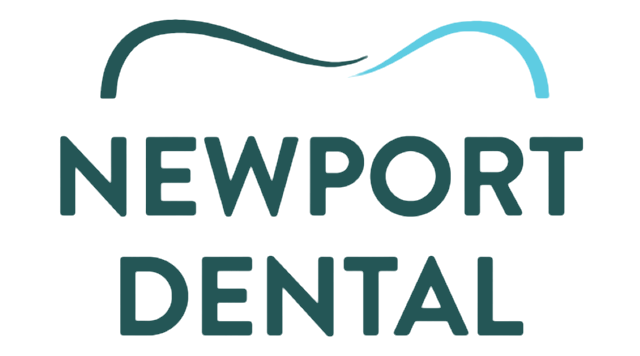
Undergoing a tooth extraction can be a stressful experience, but knowing how to care for yourself afterward makes a significant difference in your recovery. The first 24-48 hours after an extraction are crucial for proper healing and preventing complications.
Understanding what to expect and following proper post-extraction care guidelines not only speeds up recovery but also helps prevent common complications like dry socket and infection. This comprehensive guide will walk you through everything you need to know about caring for yourself after tooth extraction.
Understanding Tooth Extractions
A tooth extraction is a dental procedure where a tooth is completely removed from its socket in the jawbone. This procedure may be performed by a general dentist or an oral surgeon, depending on the complexity of the case and the specific conditions requiring the removal.
5 Reasons You Need an Extraction
- Severe Decay: When tooth decay extends deep into the tooth structure and cannot be treated with a filling, crown, or root canal, surgical removal becomes necessary to prevent the spread of infection.
- Advanced Periodontal Disease: If gum disease has caused significant bone loss around a tooth, making it loose or severely compromised, oral surgery may be the only viable option.
- Impacted Wisdom Teeth: Third molars often become trapped beneath the gum line or grow at awkward angles, necessitating extraction to prevent pain, infection, and damage to adjacent teeth.
- Orthodontic Treatment: Sometimes teeth need to be removed to create space for proper alignment during orthodontic treatment, especially in cases of severe crowding.
- Fractured Teeth: Teeth that have been severely damaged by trauma and cannot be repaired may require removal.
What Happens During an Extraction
- Initial Examination: The dentist takes X-rays to evaluate the tooth’s position and determine the best approach for removal. They review the patient’s medical history and discuss any necessary pre-procedure preparations.
- Local Anesthesia Administration: The area around the tooth is numbed using local anesthetic injections to ensure the patient remains comfortable throughout the procedure.
- Tissue Management: If needed, the dentist cuts away gum and bone tissue covering the tooth using specialized instruments.
- Tooth Removal: The dentist gently loosens the tooth from its socket and surrounding ligaments using specialized tools. For impacted teeth, the tooth may need to be sectioned into pieces for easier removal.
- Socket Cleaning: After the tooth is removed, the socket is thoroughly cleaned of any remaining infected tissue or bone fragments.
- Blood Clotting Formation: The dentist ensures a blood clot forms in the socket, which is crucial for proper healing, and may place sutures if necessary.
Why is post-extraction care important?
Proper post-extraction care plays a vital role in preventing complications and ensuring optimal healing. The initial healing period establishes the foundation for long-term oral health, and following the right care protocols helps manage pain, reduce swelling, and protect the sensitive extraction site from infection or injury.
5 Risks of Neglecting Proper Care After Your Extraction
- Risk of Dry Socket: Failing to follow proper care instructions can lead to dislodging of the blood clot, resulting in painful dry socket condition that delays healing and requires additional treatment.
- Risk of Infection Development: Poor oral hygiene or introducing contaminants to the extraction site can lead to bacterial infection, causing pain, swelling, and potential spread to surrounding tissues.
- Delayed Healing: Neglecting post-extraction care instructions can significantly extend recovery time and increase discomfort during the healing process.
- Damage to Surrounding Tissues: Improper care might result in damage to adjacent teeth, gums, or bone structure, potentially requiring additional dental work.
- Long-term Complications: Without proper care, patients may experience prolonged pain, difficulty with future dental work, or complications with dental implant placement if planned.
7 Tips for Recovering After an Extraction
- Follow Gauze Instructions: Replace gauze pads as directed by the dentist, typically every 30-45 minutes until the bleeding subsides. Maintain gentle but firm pressure by biting down on the gauze to help control bleeding.
- Apply Ice Packs: Use cold compresses on the outside of the face near the surgical site for 15 minutes at a time, with 15-minute breaks in between. This helps reduce swelling and provides natural pain relief during the first 24 hours.
- Avoid Physical Activity: Rest for at least 24 hours after the extraction, and avoid strenuous activities for 3-4 days. Excessive movement can increase bleeding and disrupt the healing process.
- Keep Your Head Elevated: When lying down, prop your head up with pillows to reduce bleeding and swelling. This position also helps minimize discomfort during the initial healing period.
- Maintain Oral Hygiene: After 24 hours, gently rinse with warm salt water 4-5 times daily, especially after meals. Avoid vigorous rinsing or spitting, as this can dislodge the blood clot.
- Take Prescribed Medications: Follow your dentist’s instructions for pain medications and any prescribed antibiotics. Complete the full course of antibiotics even if you start feeling better.
- Avoid Tobacco Products: Don’t smoke or use any tobacco products for at least 72 hours after the extraction. Tobacco use can significantly delay healing and increase the risk of complications.
7 Soft Foods to Eat After an Extraction
Ice Cream and Frozen Yogurt
Cold, smooth ice cream provides both comfort and nourishment after a tooth extraction. The cold temperature helps reduce swelling and provides natural pain relief for the tender surgical site. Choose plain flavors without nuts, candy pieces, or other hard mix-ins that could irritate the wound. Sugar-free options are available for those watching their sugar intake.
Mashed Potatoes
Mashed potatoes offer a filling, nutritious option that’s easy to eat after an extraction. They provide essential carbohydrates for energy and can be enriched with butter or gravy for additional calories and comfort. Ensure the potatoes are thoroughly mashed without lumps and served at a lukewarm temperature to avoid irritating the oral surgical site.
Smoothies
Smoothies provide an excellent way to consume fruits, vegetables, and proteins while healing from an extraction. They can be customized with protein powder, yogurt, or soft fruits to meet nutritional needs. Always drink smoothies with a spoon rather than a straw, as the suction from straws can dislodge the protective blood clot.
Yogurt and Pudding
These smooth, creamy options provide protein and calcium while being gentle on the extraction site. Greek yogurt can help promote healthy bacteria in the mouth during healing. Choose varieties without fruit chunks or granola, and ensure they’re served at a cool or room temperature.
Well Blended Soups
Lukewarm, smooth soups provide hydration and nutrients during recovery. Options like cream of chicken, tomato soup, or well-blended soft vegetable soup offer variety while being easy to consume. Avoid soups with chunks of vegetables or meat, and ensure the temperature isn’t too hot to prevent irritation.
Scrambled Eggs
Soft, well-scrambled eggs provide an excellent source of protein that requires minimal chewing. They can be prepared with additional moisture from milk or butter to make them even softer. Serve them slightly warm or at room temperature to avoid discomfort at the surgical site.
Applesauce
Smooth applesauce offers natural sweetness and important nutrients without requiring any chewing. It provides vitamin C, which aids in healing and can be served cold or at room temperature. Choose unsweetened varieties to avoid excessive sugar intake during the recovery process.
8 Things You Shouldn’t Do After Your Extraction
- Don’t Use Straws: Using straws creates suction in your mouth that can dislodge the blood clot. This can lead to a painful condition called dry socket, which significantly delays healing.
- Avoid Hot Foods and Beverages: Hot temperatures can dissolve the protective blood clot and increase swelling around the site. Wait until food and drinks are at room temperature or slightly warm before consuming.
- Skip Crunchy Foods or Hard Foods: Hard, crunchy, or crispy foods can damage the extraction site and potentially cause bleeding or infection. Avoid chips, nuts, popcorn, and similar foods for at least a week after the procedure.
- Don’t Touch the Extraction Site: Resist the urge to probe the area with your tongue or fingers, as this can introduce bacteria and disturb the healing process. Keep fingers, toothbrushes, and other objects away from the socket.
- Don’t Exercise Too Soon: Vigorous physical activity after dental surgery increases blood pressure and can lead to increased bleeding at the extraction site. Avoid exercise and heavy lifting for at least 48-72 hours after the procedure.
- Avoid Alcohol and Smoking: Both alcohol and tobacco products can delay healing and increase the risk of complications. Smoking, in particular, can lead to dry socket and infection.
- Don’t Skip Medication: Missing doses of prescribed antibiotics or pain medication can lead to infection or unnecessary discomfort. Follow your dentist’s instructions carefully.
- Avoid Aggressive Rinsing: While gentle salt water rinses are encouraged after 24 hours, aggressive rinsing or spitting can dislodge the blood clot. Let water fall naturally from your mouth instead of forcefully spitting.
Conclusion
Proper care after a tooth extraction plays a crucial role in ensuring a smooth and comfortable recovery. By following these dietary guidelines and care instructions, patients can minimize discomfort and reduce the risk of complications. Remember that each person’s healing process may vary, so always follow your dentist’s specific instructions.
For professional tooth extraction and comprehensive dental care, schedule an appointment with Newport Dental today. Visit our Facebook page for the latest updates and dental care tips, and check out our reviews on Yelp to learn why patients trust us with their dental health needs. Your comfort and recovery are our top priorities.

